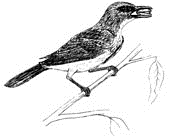Vertebrate Pest Conference: Proceedings

Vertebrate Pest Conference Proceedings: 17th (1996)
Date of this Version
1996
Document Type
Article
Citation
Published in Proceedings: Seventeenth Vertebrate Pest Conference … 1996, ed. Robert M. Timm & A. Charles Crabb (University of California, Davis, 1996).
Abstract
The factors affecting efficient use of tip traps to control rabbit populations were investigated in a series of field experiments. It was found that continual trapping at the same location was much less effective than periodic trapping. Night-time trapping operations produced larger catches of rabbits than day-time trapping. Traps were equally effective whether sited on existing runs through rabbit proof fences or on previously unbreached sections of fence. The sex ratio of rabbits caught was examined at four different locations and, in each instance, more females were caught than males. The installation of a network of tip traps and associated rabbit proof fencing on a study farm in southern Scotland provided a small positive income per rabbit when carcasses were sold to a local game dealer. Traditional trapping methods employing a professional trapper on the same study farm resulted in a large reduction in rabbit numbers, but despite the sale of carcasses to a local dealer, there was still a net cost to the farmer per rabbit caught. The catch time per rabbit using tip traps was considerably less than the catch time per rabbit using a professional trapper.
Included in
Animal Sciences Commons, Bioresource and Agricultural Engineering Commons, Environmental Engineering Commons


Comments
Copyright © 1996 (where applicable) by the Vertebrate Pest Council of the Vertebrate Pest Conference. Used by permission.